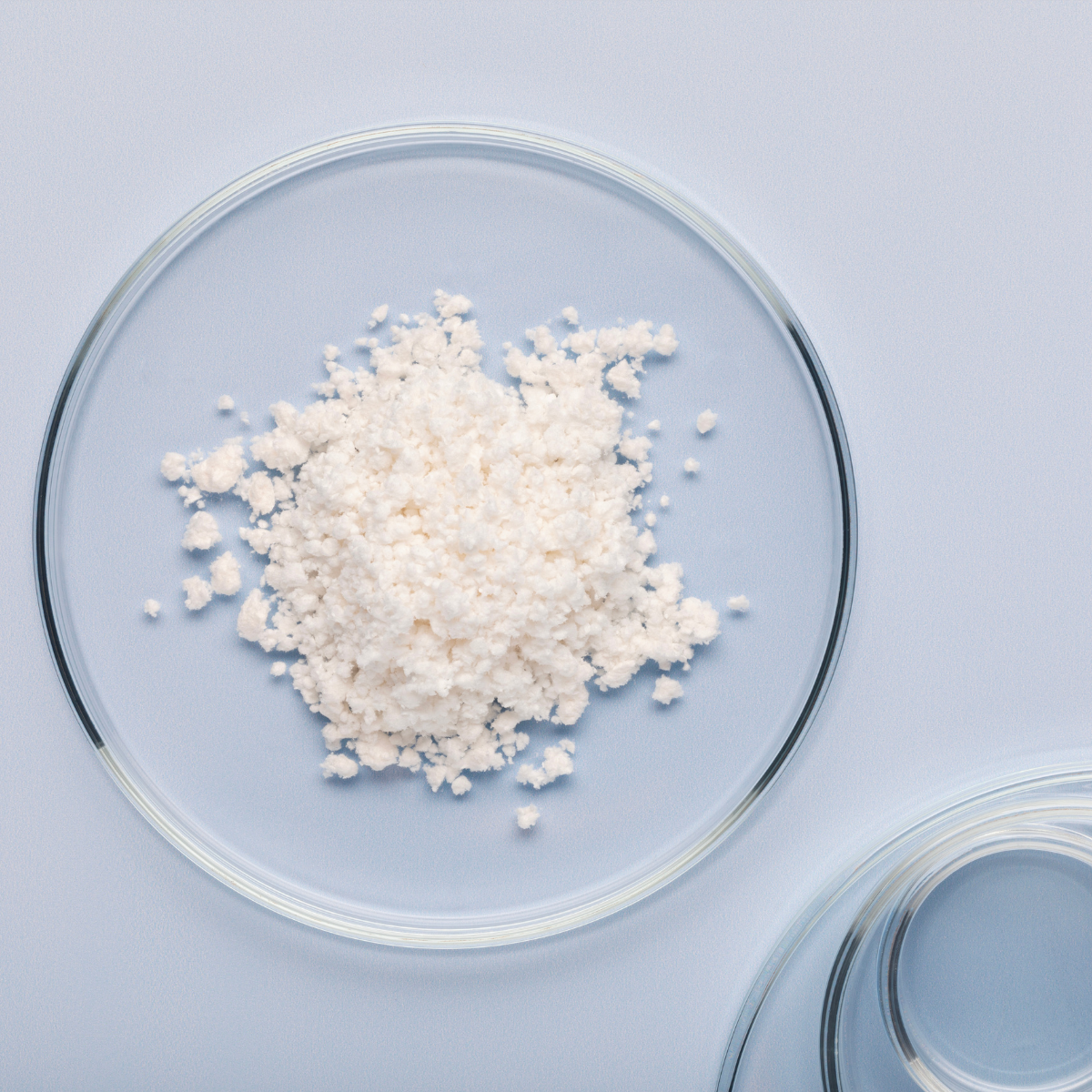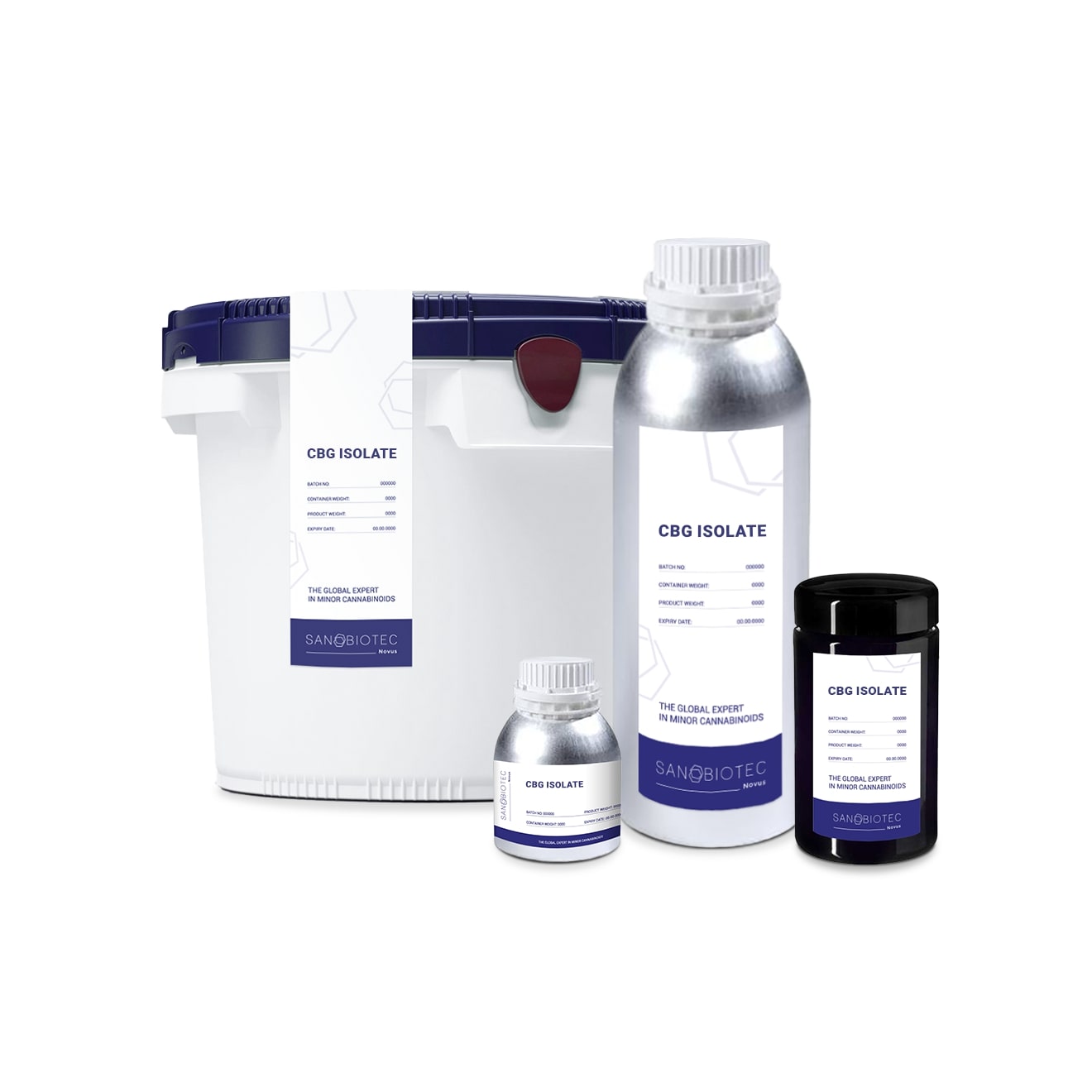CBG (Cannabigerol) is a cannabinoid naturally present in cannabis plants. A popular ingredient in consumer cannabinoid products, cannabigerol is known to be well tolerated with little or no side effects, all while offering a wide range of CBG benefits. Early research shows that CBG has unique properties to relieve pain and fight against infections and inflammation in the body.
Sanobiotec is a trusted cannabinoid manufacturer in USA and worldwide. We use advanced technology, the latest scientific findings, and extraction methods to produce top-quality, pure CBG isolate safe for human consumption. Our CBG isolate is >99% pure, meaning it has the lowest amount of contaminants and other cannabinoid compounds.
To try it yourself, use the buttons below to inquire about bulk buying CBG isolate or book a call to discuss your needs.
Bulk CBG isolate wholesale
We offer our customers premium quality cannabinoids at the wholesale price. You can buy CBG online through our website in bulk. Our warehouses are located in the USA, Japan, and at our headquarters in Vilnius, Lithuania, so when buying bulk CBG isolate from us, you can be sure that the freshest batch of CBG isolate wholesale is ready to leave our stock in a moment’s notice.
Once you receive your CBG bulk, store it in a cool, dry, and dark place, away from direct sunlight. Typically, CBG isolate powder has a long shelf life if stored properly.
CBG certification
CBG isolate is a powerful ingredient that can help reduce inflammation, relieve nausea, digestive issues, and help you deal with other health concerns. But for you to feel all the benefits, you have to make sure that the cannabigerol is in its purest isolate form, which Sanobiotec delivers on a batch-to-batch basis.
At Sanobiotec, each CBG batch we produce undergoes rigorous testing to receive certification and ensure it meets all the quality and safety standards and regulations. We conduct various tests in our labs and use third-party testing in ISO 17025 Certified 3rd Party Testing Labs, assuring you that you are ordering a safe and clean product. Sanobiotec is also a Certified Company with ISO 22716:2007 and ISO 9001:2015.
CBG (cannabigerol) benefits
CBG (cannabigerol), as a cannabinoid, is one of the few that can be isolated from the plant in the highest quality. When using certified CBG isolate from Sanobiotec, consumers can get all CBG benefits, knowing it is fully tested for toxins and psychoactive contaminants. In the human body, CBG works in tandem with the endocannabinoid system and its receptors CB1 and CB2. By binding to them, cannabigerol activates several processes which leads to various positive effects.
Some of the potential CBG’s benefits are:
- Pain relief,
- Appetite stimulation for people who might struggle with appetite loss due to an eating disorder or medication use,
- Mood regulation,
- Glaucoma treatment,
- Colon protection against cancer.
What is the difference between CBG and CBD?
Both CBD and CBG are naturally found in the hemp plant and are considered non-psychoactive cannabinoids, meaning they don’t get you high. They also share similar relaxing and anti-inflammatory effects, but CBD is considered to be a more potent ingredient than CBG.
CBG isolate effects
CBG, when consumed, won’t cause intoxication because it’s non-psychoactive. The research shows that CBG affects the immune system and has anti-inflammatory and anti-cancer properties. It can also help alleviate anxiety and depression.
Where can I buy CBG near me?
You can buy CBG in bulk online at Sanobiotec. We offer only tested and certified CBG isolates and other cannabinoid products. You can buy CBG isolate powder for your personal use, CBG distribution, or to make consumer products. To order your CBG bulk, contact us to discuss your specific needs or request a sample.








